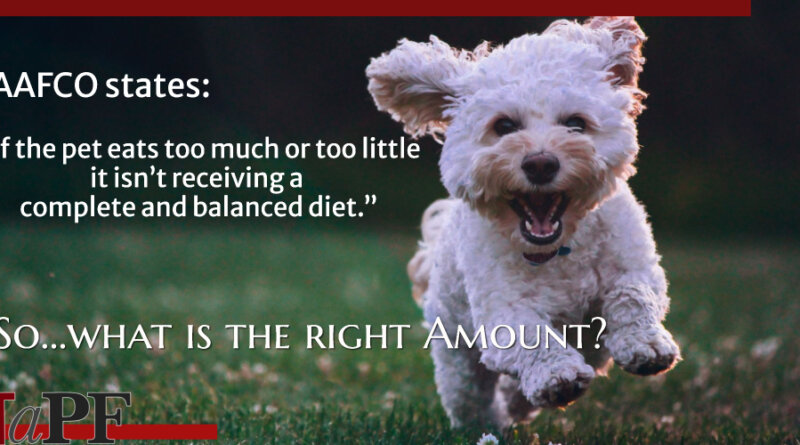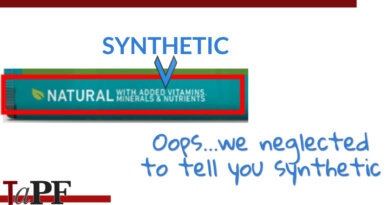Should You Follow Feeding Directions? – Truth about Pet Food
On AAFCO’s pages for advice to pet owners, it states (bold added):
“Even once a pet owner has selected the right pet food, if the pet eats too much or too little it isn’t receiving a complete and balanced diet.”
This advice from AAFCO acknowledges that pets eating the correct amount of pet food is significant for the pet to receive a complete and balanced diet. AAFCO has established Nutrient Profiles for cat foods and dog foods that include all the required nutrients. Those nutrients are required to meet a minimum level (and in some instances a maximum level) per 1,000 kcal of pet food. When the pet is eating the correct amount of food (kcal of food), the diet is complete and balanced.

AAFCO also tells pet owners they “should:
- read a label correctly
- select a food labeled for the pet’s species, life stage and condition
- follow feeding directions on the label“
But…there’s a problem. We found DRAMATIC differences in manufacturer recommended feeding amounts (recommended kcal per day).
With cat foods:

With dog foods:

Each one of the pet foods listed above are Complete and Balanced pet foods. They are all formulated per AAFCO Nutrient Profiles.
So…how can a dog food recommending 361 kcals per day and a dog food recommending 1275 kcals per day (3½ times more kcals) both be the correct amount of food (a complete and balanced diet) for a 30 pound dog?
One would assume that regulations for feeding directions would require pet food manufacturers to recommend amounts that provide a complete and balanced diet.
But, no. AAFCO’s regulations for feeding directions on pet food labels do NOT specifically require manufacturers to recommend an amount of food that guarantees a complete and balanced diet. These lax regulations allow some manufacturers to recommend feeding less (which would make their product appear to be less expensive to feed) and allows opportunity for some manufacturers to recommend feeding more (which would result in pet owners buying more pet food).
One would also assume that because a complete and balanced diet is so significantly important for pets, that regulatory authorities would validate the manufacturer’s recommended feeding amounts to assure the amounts are appropriate for the size of pet.
Again, no. As we have exampled above, clearly regulatory authorities don’t validate this pertinent information on pet food labels.
So what can you do?
Email your pet food manufacturer, ask them to provide you with recommended feeding amounts for your pet’s weight to assure they are receiving a complete and balanced diet.
We discussed this issue with FDA at our January 13, 2023 meeting. We are hopeful FDA will take prompt action to correct this problem. In the meantime, email your manufacturer and get their recommended feeding amount for your pet’s weight and their guarantee that amount provides a complete and balanced diet.
Wishing you and your pet(s) the best,
Susan Thixton
Pet Food Safety Advocate
Author Buyer Beware, Co-Author Dinner PAWsible
TruthaboutPetFood.com
Association for Truth in Pet Food

Become a member of our pet food consumer Association. Association for Truth in Pet Food is a a stakeholder organization representing the voice of pet food consumers at AAFCO and with FDA. Your membership helps representatives attend meetings and voice consumer concerns with regulatory authorities. Click Here to learn more.
What’s in Your Pet’s Food?
Is your dog or cat eating risk ingredients? Chinese imports? Petsumer Report tells the ‘rest of the story’ on over 5,000 cat foods, dog foods, and pet treats. 30 Day Satisfaction Guarantee. Click Here to preview Petsumer Report. www.PetsumerReport.com
Find Healthy Pet Foods in Your Area Click Here

The 2023 List
Susan’s List of trusted pet foods. Click Here to learn more.




